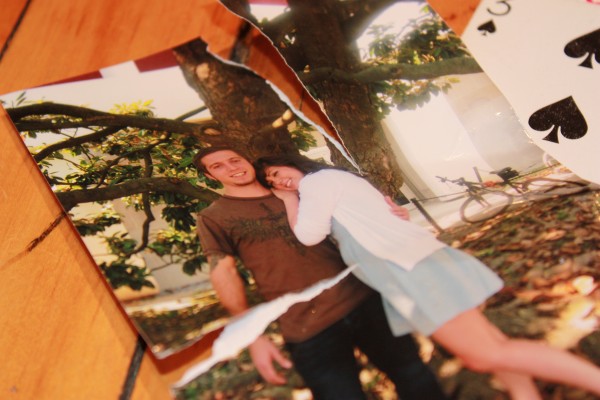
Each year, as a part of Domestic Violence Awareness Month, the Murray State Women’s Center opens a walk-through, interactive exhibit known as Crazy In Love. Earlier this week, the center had the exhibit in Wrather Museum, hosted for all students and the community to see.
The purpose of the exhibit is to show how someone in a serious relationship often ignores the red flags that signal domestic violence. The exhibit explores the relationship of Jenna who is 19 and Chris who is 23. They are two made-up characters who meet in college and quickly fall in love. There are five separate rooms in the exhibit, each are rooms that Jenna lives in and each represents a different time in the couple’s relationship.
“(Jenna’s) excited about college and excited about this new relationship,” said Abigail French, interim director of the Women’s Center. “You move through the exhibit and each room (shows things like) where she moves in with him and then you see their relationship get progressively more violent.”
French described the end of the exhibit as a crime scene where assumptions could be made as to what happened.
While walking through all of the the rooms, students had the opportunity to read Jenna’s journals, watch the couple’s video blogs, look at their pictures and read messages they left for each other.
“You get to watch their videos and you get to see them interact and it kind of helps you get to see who they are and what kind of people they are and how their relationship progresses,” French said.
In preparation for the event, the Women’s Center staff found themselves having to start over, due to an accident that occurred over the summer.
“All of the props that were originally collected in the past were accidentally thrown away over the summer,” French said. “So, we had to completely start over and collect everything again and put it all back together.”
The items they collected were items typically found in a dorm room or living room area, French said. The staff gathered clothes, towels, rugs and other home items to make this year’s exhibit as realistic as it had been in the past years with the previous director, Jane Etheridge.
Since the exhibit has been known as an eye-opening experience for many past observers, Kayla Toering, Women’s Center graduate assistant and residential director of Springer Residential College, recommends her residential advisers and students take advantage of Crazy In Love.
“I think it’s been really helpful for me to be a part of the Women’s Center this year so I can know what’s happening,” Toering said. “I can be able to spread that word not only to my staff but to other RDs on campus since we all work so closely together.”
At the end of the exhibit, students had the opportunity to write their comments about their experience, whether it be good or bad. They were also encouraged to collect pamphlets and information about how to get help if in an abusive relationship or if a friend is in an abusive relationship. Students could also read the Gone But Not Forgotten displays which honor the men and women who were killed in 2007-2011 by their partner.
Although the experience is arguably emotional, the Center’s goal is to expose the signals that are often ignored in relationships.
“I hope the students (who attended) will be more aware of their relationships,” Toering said. “I feel like I’ve worked with students who don’t recognize the signs of verbal and emotional abuse, which clearly escalates further – so I think being aware of those signs and knowing when to get out and when to seek help of some kind is a good thing.”
French agreed and added she wants students and observers of the exhibit to see how bad things can get if the signals go unnoticed or get ignored.
“Just be aware of what’s going on in your own life, be aware of what’s going on in your friends’ lives,” French said. “There are clues in the environment that shouldn’t be ignored or discounted. Know that violence is a progression that can escalate and usually does. We want (students) to see that this is what can happen and we don’t ever want them to get there, so be aware of these signs in the beginning so that you can cut it off.”
The best thing anyone can do when in this situation, Toering said, is to talk with someone they are close to.
“I encourage my staff to have regular interactions with people so that their residents will feel comfortable, but I think that if you are going through something, you should find somebody that you feel comfortable talking to – get that outside opinion – because I feel like a lot of people are a lot more hesitant to seek help right away,” Toering said. “If you can find that person that you trust they can help you or help you find somebody who can.”
Story by Anna Taylor, Features Editor.